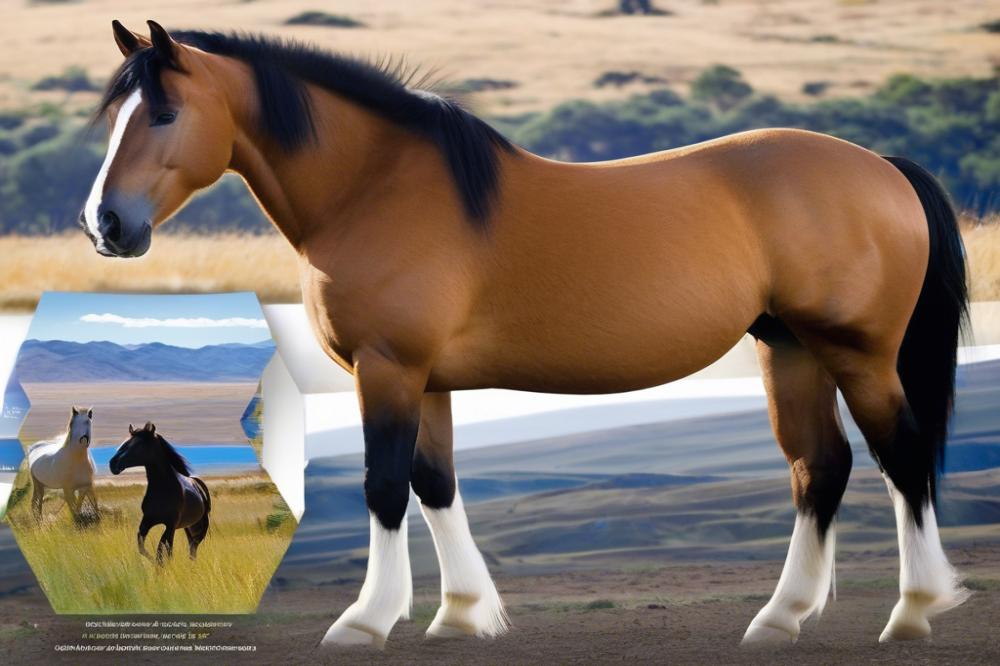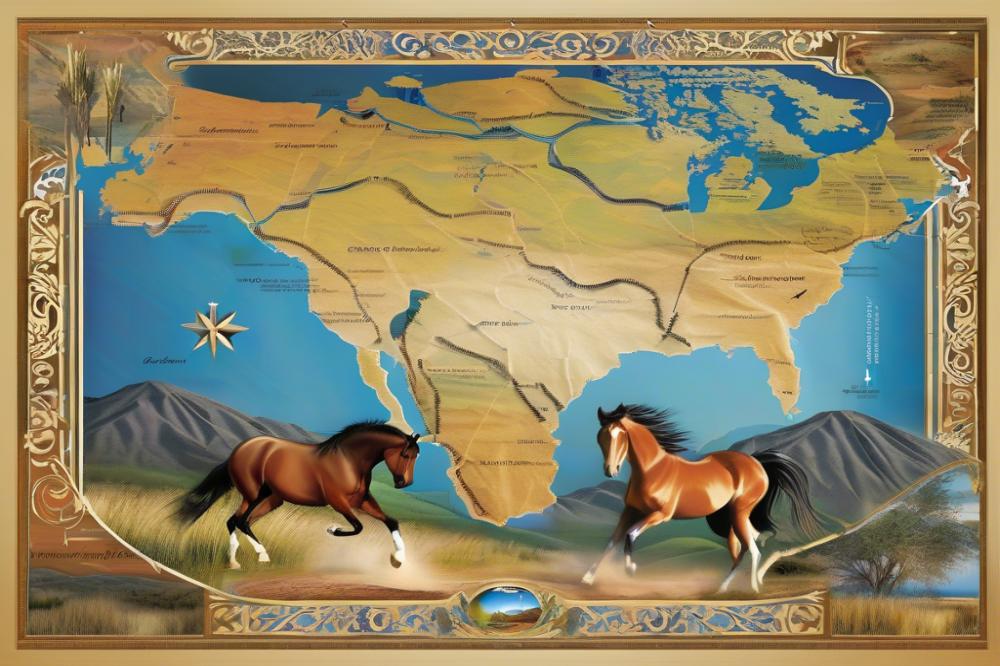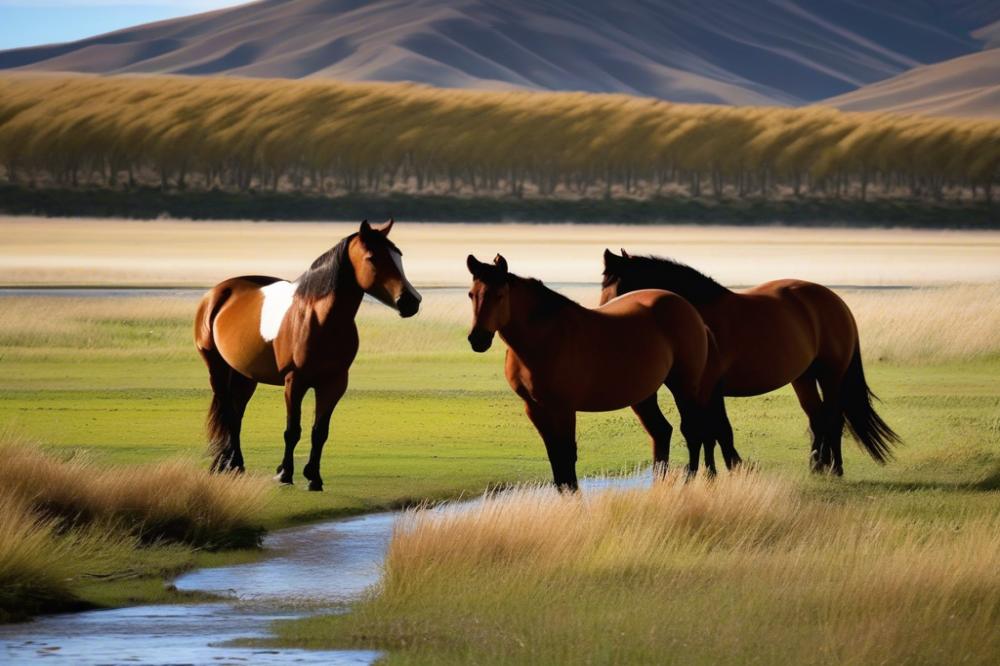Argentina’s Wild Criollo Horses: Spirit of the Pampas
Exploring Feral Horse Populations
Around the world, feral horse populations roam wild in various environments. These majestic animals have become symbols of freedom and resilience. In North America, mustangs captivate hearts, while Australia’s brumbies highlight a rugged wilderness. Different regions provide a unique backdrop for these horses, offering insights into their adaptability and survival.
Criollo Horses in Global Context
In this landscape, Argentina‘s Criollo Horses stand out. They reflect the rich cultural and historical ties of the region. These horses carry a legacy that dates back centuries, intertwining with the lives of early settlers and indigenous peoples. Their importance is not just about their numbers but their ability to thrive in challenging conditions. Known for their endurance and strength, these horses are vital to the traditions of the Pampas.
The Significance of the Pampas
The Pampas region is more than a setting; it’s an ecosystem teeming with life. This vast grassland offers an ideal habitat, with open spaces that allow for both grazing and movement. Natural resources abound here, supporting diverse wildlife alongside the horses. The interplay of climate and geography creates a unique environment, shaping both the land and the creatures that inhabit it.
In Argentina, the Criollo Horses embody the spirit of the Pampas. Their presence tells a story of resilience and adaptation. Each horse contributes to the melting pot of culture, agriculture, and history in this region. As we delve deeper into the world of these remarkable animals, the connection between the landscape and their survival becomes increasingly clear.
History of Criollo Horses

The origins of Criollo horses trace back to the Spanish explorers and settlers in the 16th century. These conquistadors brought their horses to the New World, which included breeds like Andalusians and Barb horses. Over time, these horses adapted to the diverse landscapes of Argentina. Not only did they survive, but they thrived in the vast Pampas region. The rugged terrain and climate forced these horses to become tough and resilient.
Spanish horses were very important to the success of early colonial life. They served as mounts for exploring the jungles and plains. As the years went by, the needs of the settlers shaped the development of these horses. Local breeding practices combined with natural selection led to a distinct breed. Adaptation occurred gradually, making them well-suited for ranch work and travel across the expansive lands.
The culture of the gauchos is intertwined with the history of these horses. Gauchos, known as Argentina’s cowboys, relied heavily on them for work and transportation. The Criollo became a symbol of their culture and independence. Ranching practices were built around their unique capabilities. They could cover vast distances and handle cattle efficiently.
Daily life for gauchos depended on riding these strong horses. They exhibit an excellent temperament and trainability. Most ranches in Argentina utilized Criollo horses to handle their livestock and conduct various tasks. This partnership between gauchos and horses is a vital aspect of their identity.
Over the centuries, these animals became more than just livestock. They emerged as a cultural icon that reflects the spirit of Argentina. The history reveals a bond that goes beyond simple utility. It tells the story of a people and their land, united through their enduring connection to these remarkable horses.
Characteristics of Criollo Horses

Physical Traits and Breed Standards
Criollo horses possess a distinct appearance. They typically stand between 14.2 to 15.2 hands tall. Their bodies are well-muscled, sturdy, and compact. One notable feature is their thick neck and broad chest. This breed often showcases a short back and strong hips. The coat comes in a variety of colors, including bay, chestnut, and black. Breed standards emphasize endurance and agility over sheer speed. This focus contributes to their performance on the rugged terrain of the Pampas.
Adaptations to the Pampas Environment
Adaptations define this breed’s survival in the Pampas. Hardiness is a key trait. Criollo horses handle both hot sun and sudden rainstorms with grace. Their shallow blood vessels help regulate body temperature. Endurance allows them to traverse long distances with less fatigue. These animals graze on the diverse grasses found in the Pampas. Their hooves are tough and well-suited for the varied terrain. This resilience is a product of generations living in a harsh environment.
Comparison with Other Horse Breeds
When compared to other breeds, Criollos stand out. They have more stamina than many racing breeds. While Thoroughbreds excel in speed, Criollos shine in versatility. These horses can adapt to various tasks, from herding cattle to long-distance rides. In contrast, Arabian horses are notable for their endurance but may lack the same stockiness. This breed also tends to be more docile, a trait that makes them easier to train. Overall, Criollo horses weave a unique thread in the tapestry of equestrian life.
The Role of Criollo Horses in Equestrian Culture
Argentina’s equestrian culture is deeply intertwined with its ranching history. Criollo horses play a significant role in traditional ranching and livestock herding. They are highly valued for their adaptability and endurance. Ranchers depend on them for herding cattle across the vast Pampas. The ability of these horses to navigate difficult terrains makes them indispensable on the ranches.
Cultural events celebrate the bond between humans and these animals. Festivals often showcase skills in horse riding and herding. Activities like rodeos and traditional gaucho competitions highlight their agility and intelligence. Riders demonstrate their expertise through various equestrian sports. These events attract spectators and foster a sense of community pride.
Local communities feel a strong connection to their historical roots through these horses. Many families have raised Criollo horses for generations. This practice helps preserve their rich heritage and identity. Younger generations learn to ride and care for these animals, ensuring that age-old traditions continue. Such involvement promotes not only cultural awareness but also a shared love for the Pampas and its iconic creatures.
Biodiversity and Conservation of Wild Criollo Horses
Status of feral Criollo populations in the Pampas
Wild Criollo horses roam the expansive Pampas region of Argentina. These animals have adapted to the environment over generations. Currently, their populations face threats from habitat loss and human activities. In some areas, these horses thrive, while in others, their numbers are dwindling. Feral groups exist, but their future remains uncertain. Efforts to monitor these herds are crucial for understanding their status. Observing their behavior and population trends can provide vital insights.
Conservation efforts and challenges faced
Various organizations work to preserve these horses in their natural habitat. Efforts include protecting grazing land and promoting awareness about the species. Engaging local communities is also key to successful conservation. Resistance from some sectors of society can complicate these initiatives. Land development often threatens the areas where these horses live. Collaborations with farmers and ranchers may help to mitigate these impacts. Outreach programs educate the public on the importance of maintaining biodiversity.
Importance of genetic diversity in horse breeds
Genetic diversity is essential for the health of any species, including horses. A diverse gene pool can help protect against disease and environmental changes. Inbreeding can lead to problems like reduced fertility and weak offspring. Protecting the genetic heritage of these creatures thus becomes vital. As populations decline, the risk of losing unique traits increases. Maintaining different bloodlines is crucial for future generations. This aspect of conservation goes beyond just preserving numbers; it relates to the overall resilience of the species.
Criollo Horses and Their Natural Habitat
Description of the Pampas Ecosystem
The Pampas is a vast grassland region found in Argentina. It features expansive plains that provide a rich habitat for countless species. Dominated by grasses, this ecosystem thrives with a variety of wildflowers and shrubs. Its climate is characterized by moderate rainfall and a temperate zone, making it suitable for both plant and animal life. Wildlife roams freely across these fields, creating a lively and dynamic environment. Many birds and small mammals make the Pampas their home, contributing to the area’s ecological diversity.
Interaction Between Criollo Horses and Their Environment
These horses have adapted remarkably well to the landscape of the Pampas. They graze on the lush grasses, which helps keep the fields healthy and vibrant. Their behavior impacts the growth patterns of various plants. By roaming over large distances, they help spread seeds and nutrients through their droppings. As they move, they create pathways, which in turn allows other animals to thrive in the same areas. This mutual relationship with the land helps sustain the ecosystem around them.
Role in Maintaining Biodiversity in the Region
In their natural environment, they play a crucial role in maintaining ecological balance. Their presence supports diverse flora and fauna, offering a stable habitat for many species. By grazing, they prevent overgrowth of certain plants, which could choke out other vital species. This interaction encourages a diverse array of wildlife to flourish. Other animals benefit from the habitat cultivated by the horses, making it a richer ecosystem. Protecting these iconic creatures helps to preserve the overall health of the Pampas.
Challenges and Future of Argentina’s Criollo Horses
Modern agricultural practices pose significant threats to these iconic animals. As farming methods evolve, the land that once supported herds of Criollo horses is often transformed into crop fields or urban areas. This shift diminishes the natural habitat essential for their survival. Livestock ranchers have to make hard choices between traditional ways of life and the demands of contemporary agricultural markets.
Finding a balance is crucial. Preservation efforts for these horses compete against the economic pressures ranchers face. Increasingly, many are tempted to pursue more lucrative agricultural options. The challenge lies in maintaining a connection to heritage while adapting to change. Some ranchers recognize the value of keeping Criollo horses in their operations and look for ways to incorporate them sustainably.
Potential exists for sustainable practices that honor both tradition and modernity. By promoting extensive grazing methods and preserving open spaces, ranchers can protect habitats. This approach not only benefits wildlife but can also enhance the quality of the land itself. Strategies that support both livestock welfare and ecological integrity offer a promising path forward.
Community involvement plays an essential role too. Local groups are increasingly working to raise awareness about the importance of protecting this heritage. Public interest can drive policies that support the preservation of these unique animals. Educating younger generations about the history and significance of Criollo horses creates a deeper appreciation for their place in Argentine culture.
Maintaining these horses will require collaboration among various stakeholders. It is vital for ranchers, conservationists, and the government to work together. By uniting their efforts, they can create a future that respects both the land and the horses. Ultimately, the fate of these remarkable animals rests on the choices made today.
Final Thoughts
Criollo horses hold an important place in Argentina’s culture and history. These animals represent the spirit of the Pampas, showcasing resilience and adaptability. Their roles in agriculture, ranching, and local traditions highlight their significance beyond mere transportation. For many, these creatures symbolize freedom and the open skies of their homeland.
Conserving wild horse populations is crucial for future generations. They carry a legacy that connects people to the land. By protecting these animals, we also preserve the landscapes they inhabit. Every step taken to safeguard their habitat contributes to the vibrant biodiversity of Argentina. This natural heritage enriches our planet and teaches us about respect for wildlife.
Community support plays a key role in conservation efforts. Individuals can contribute by raising awareness and supporting organizations dedicated to these causes. Participating in local programs or donating offers tangible help. Together, we can foster an environment where both humans and wildlife thrive. Saving wild horses will preserve the rich tapestry of Argentina’s natural history for years to come.



